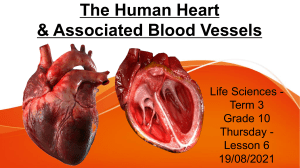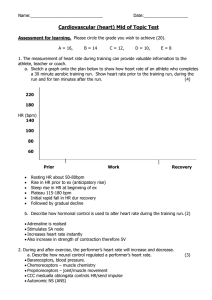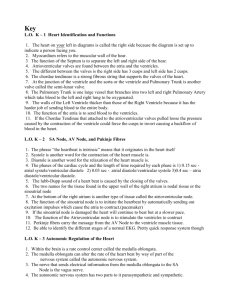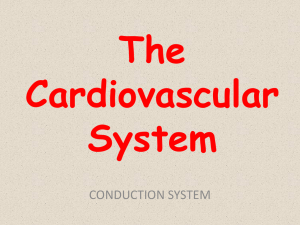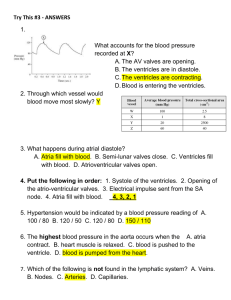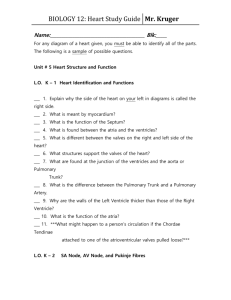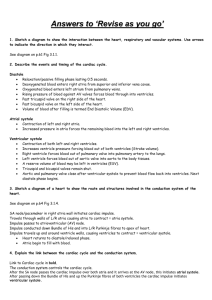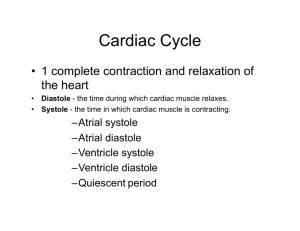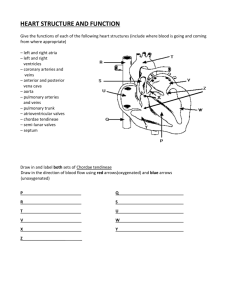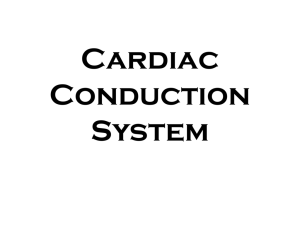summary of mark schemes H5 The transport system
advertisement
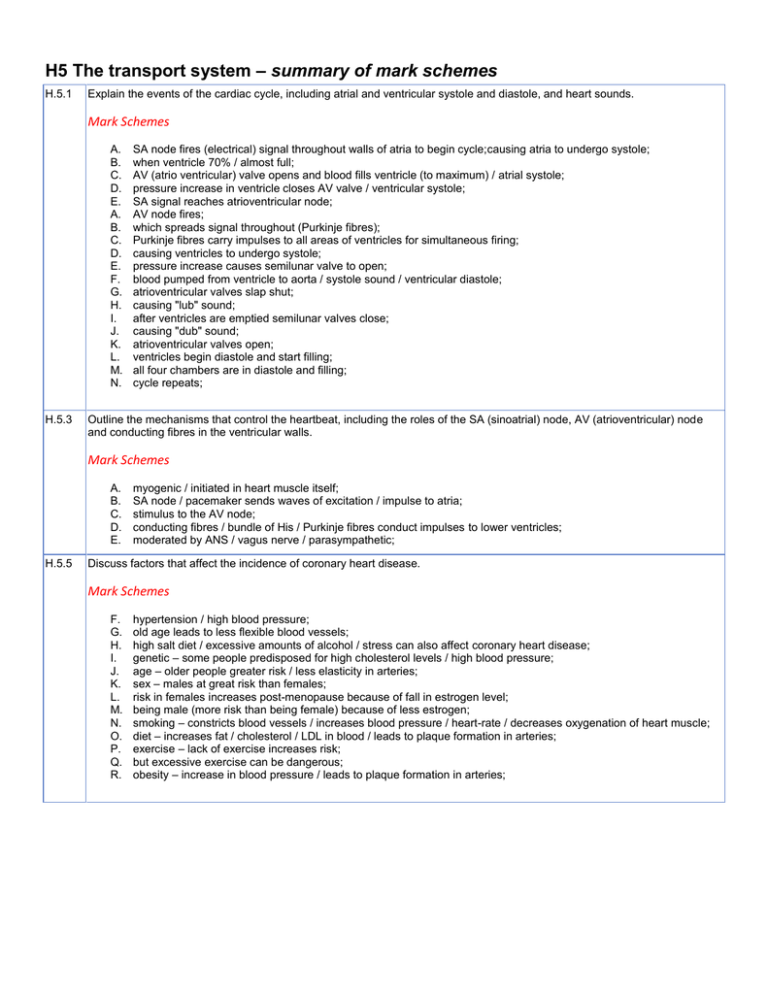
H5 The transport system – summary of mark schemes H.5.1 Explain the events of the cardiac cycle, including atrial and ventricular systole and diastole, and heart sounds. Mark Schemes A. B. C. D. E. A. B. C. D. E. F. G. H. I. J. K. L. M. N. H.5.3 SA node fires (electrical) signal throughout walls of atria to begin cycle;causing atria to undergo systole; when ventricle 70% / almost full; AV (atrio ventricular) valve opens and blood fills ventricle (to maximum) / atrial systole; pressure increase in ventricle closes AV valve / ventricular systole; SA signal reaches atrioventricular node; AV node fires; which spreads signal throughout (Purkinje fibres); Purkinje fibres carry impulses to all areas of ventricles for simultaneous firing; causing ventricles to undergo systole; pressure increase causes semilunar valve to open; blood pumped from ventricle to aorta / systole sound / ventricular diastole; atrioventricular valves slap shut; causing "lub" sound; after ventricles are emptied semilunar valves close; causing "dub" sound; atrioventricular valves open; ventricles begin diastole and start filling; all four chambers are in diastole and filling; cycle repeats; Outline the mechanisms that control the heartbeat, including the roles of the SA (sinoatrial) node, AV (atrioventricular) node and conducting fibres in the ventricular walls. Mark Schemes A. B. C. D. E. H.5.5 myogenic / initiated in heart muscle itself; SA node / pacemaker sends waves of excitation / impulse to atria; stimulus to the AV node; conducting fibres / bundle of His / Purkinje fibres conduct impulses to lower ventricles; moderated by ANS / vagus nerve / parasympathetic; Discuss factors that affect the incidence of coronary heart disease. Mark Schemes F. G. H. I. J. K. L. M. N. O. P. Q. R. hypertension / high blood pressure; old age leads to less flexible blood vessels; high salt diet / excessive amounts of alcohol / stress can also affect coronary heart disease; genetic – some people predisposed for high cholesterol levels / high blood pressure; age – older people greater risk / less elasticity in arteries; sex – males at great risk than females; risk in females increases post-menopause because of fall in estrogen level; being male (more risk than being female) because of less estrogen; smoking – constricts blood vessels / increases blood pressure / heart-rate / decreases oxygenation of heart muscle; diet – increases fat / cholesterol / LDL in blood / leads to plaque formation in arteries; exercise – lack of exercise increases risk; but excessive exercise can be dangerous; obesity – increase in blood pressure / leads to plaque formation in arteries;
